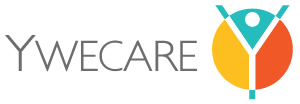Blog
Eating Animals
Whether or not the ethical implications concerned with the consumption of animals outweigh the supposed health benefits of doing so has been the subject of debate for decades. Prompted by the birth of his first child, writer Jonathan Safran Foer explores this question in depth. After three years of research, Foer takes a strong stance on the matter and is able to put forth a cogent case against the meat industry and its products in his 2009 book Eating Animals. Via the use of personal anecdotes, blunt diction and a clamant tone Foer efficaciously brings forth the ills of factory farming whilst eliciting outrage from his audience, moving them to take action.
 Foer recounts his numerous personal experiences with meat production, shining a bright light on the considerably arcane industry. After contacting one of the last independent slaughterhouses in the northwest (the rest have been bought by corporations), owner Mario Fantasma of Paradise Locker Meats gave Foer a tour of the building. Foer shares his firsthand glimpse of the egregious and unsanitary conditions, “It is not because I am a city boy that I find this repulsive. Mario and his workers have admitted to having difficulty with some of the more gory aspects of slaughter, and I heard that sentiment echoed wherever I could have frank conversations with slaughterhouse workers”(Foer 156).
Foer recounts his numerous personal experiences with meat production, shining a bright light on the considerably arcane industry. After contacting one of the last independent slaughterhouses in the northwest (the rest have been bought by corporations), owner Mario Fantasma of Paradise Locker Meats gave Foer a tour of the building. Foer shares his firsthand glimpse of the egregious and unsanitary conditions, “It is not because I am a city boy that I find this repulsive. Mario and his workers have admitted to having difficulty with some of the more gory aspects of slaughter, and I heard that sentiment echoed wherever I could have frank conversations with slaughterhouse workers”(Foer 156).
Foer also participated in multiple clandestine midnight visits to factory farms with a former farm worker, “C”. In one visit he saw a myriad of suffering creatures in their artificial nightmarish habitat, “the closer I look the more I see... Because there are so many animals it takes me several minutes before I take in how many dead ones there are”(Foer 87). Foer’s personal experiences are more powerful than secondhand knowledge gained by research, the reader is confronted with incontrovertible and unavoidable truths that force them to open their eyes and take strong issue with the matter.
Foer recognizes that fighting against widely entrenched values leaves little time for politeness. He employs acerbic and blunt diction for shock value, helping further his case. In the aforementioned visit to a factory farm, C comes across an emaciated chick covered in sores and ends its suffering, “she slices its neck, rescuing it”(Foer 89). He makes the point that she does not just end the animals suffering, she rescues it from the monstrosity that is the factory farm. Foer makes it clear that this is the domain in which many have witnessed the “butchering of an animal” and have heard the “the infant like screech of a pig being castrated and slaughtered”. Foer concludes that the the factory farm has “succeeded by divorcing people from their food, eliminating farmers, and ruling agriculture by corporate fiat”(Foer 237). Words such as “divorcing”, “eliminating” and “ruling” paint a picture of a tyrannical business wreaking havoc on human beings and the animals which they consume. The audience swayed into the conviction that this tyranny must be stopped by all means necessary.
His rhetorical strategies and claims allow Foer to create an urgent tone. After analyzing the recent and exponential growth of this pernicious industry, he questions where and when will the destruction end, “if the world followed America’s lead, it would consume over 165 billion chickens annually (even if the world population didn’t increase). And then what? Two hundred billion? Five hundred? Will the cages stack higher or grow smaller or both? On what date will we accept the loss of antibiotics as a tool to prevent human suffering? How many days of the week will our grandchildren be ill? When does it end?” (Foer 148). Regarding the suffering of animals, Foer reasons that “no reader would tolerate someone swinging a pickax at a dog’s face”(Foer 31). However, he then goes on to reveal that things like this and worse happen to animals in factory farms consistently, and this is absolutely unacceptable. Foer knows that any person with an inkling of humanity in their heart will agree with his sentiment. To drive his message home, he makes the point that bystanding is equivalent to committing the crime, “no response is a response- we are equally responsible for what we do and dont do. In the case of animal slaughter, to throw your hands in the air is to wrap your fingers around a knife handle”(Foer 226).
Foer’s purpose in writing Eating Animals is clear: to share the repercussions that factory farming has in multiple spheres of life and to dictate a clarion call for action. His skillful use of passionate yet informative language and claims leads the reader to question their previous assumptions about meat. After reading his book, it is crystal clear to the reader that when it comes to the wellbeing of the environment, animals, and the reader him/herself, the way we currently produce our food is unsustainable and change is inevitable.
